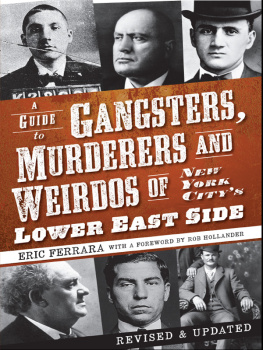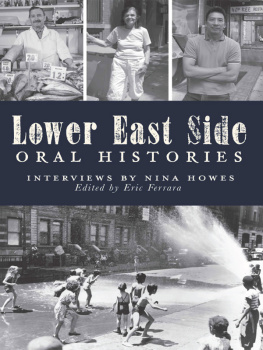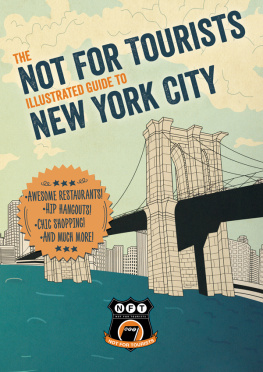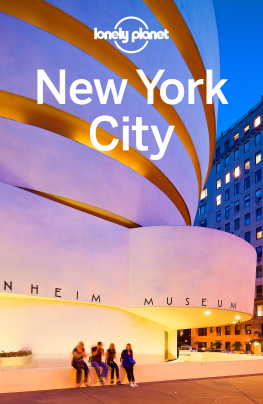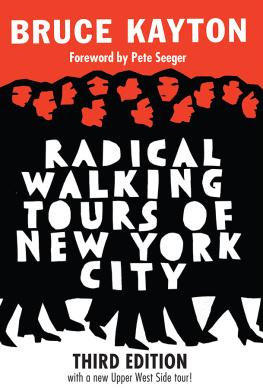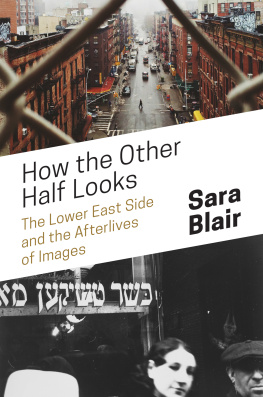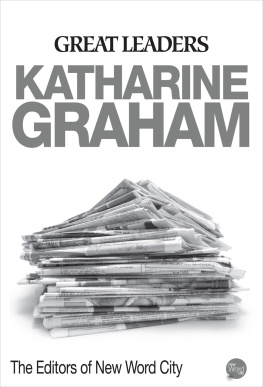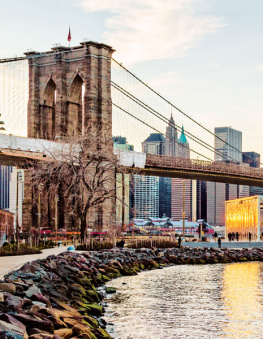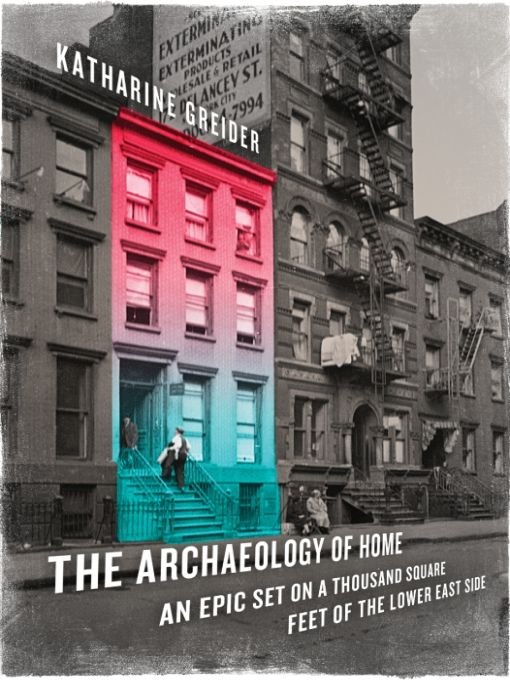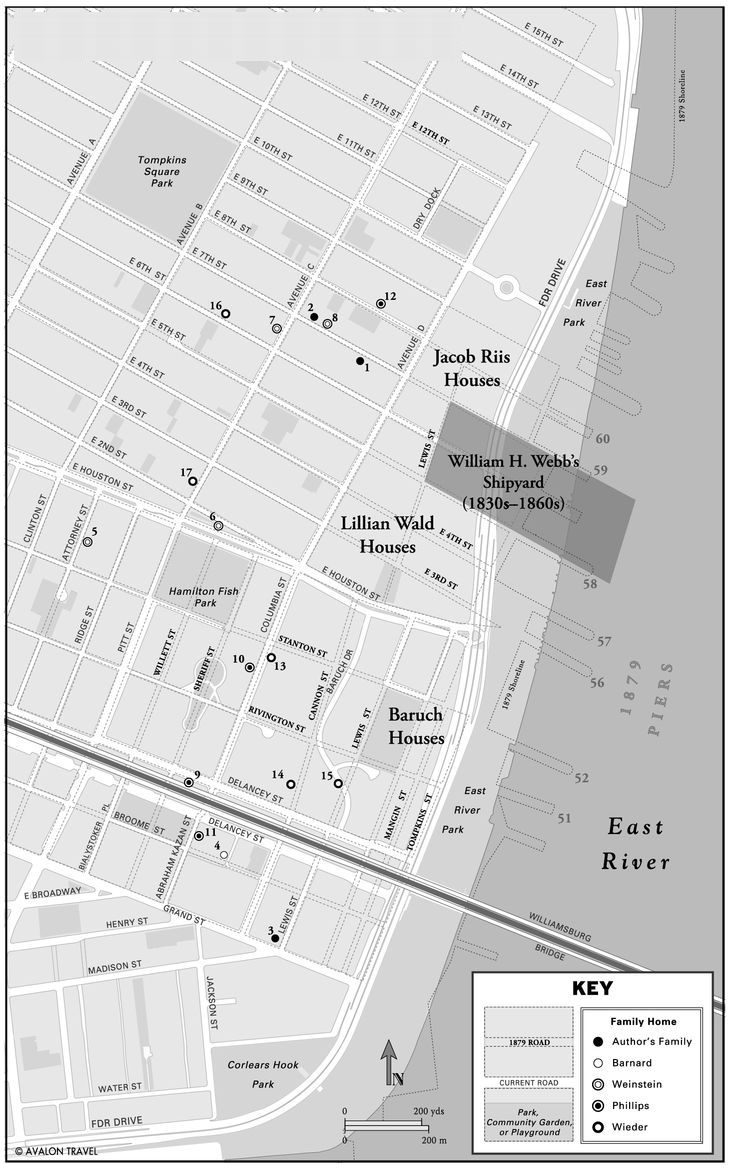Table of Contents
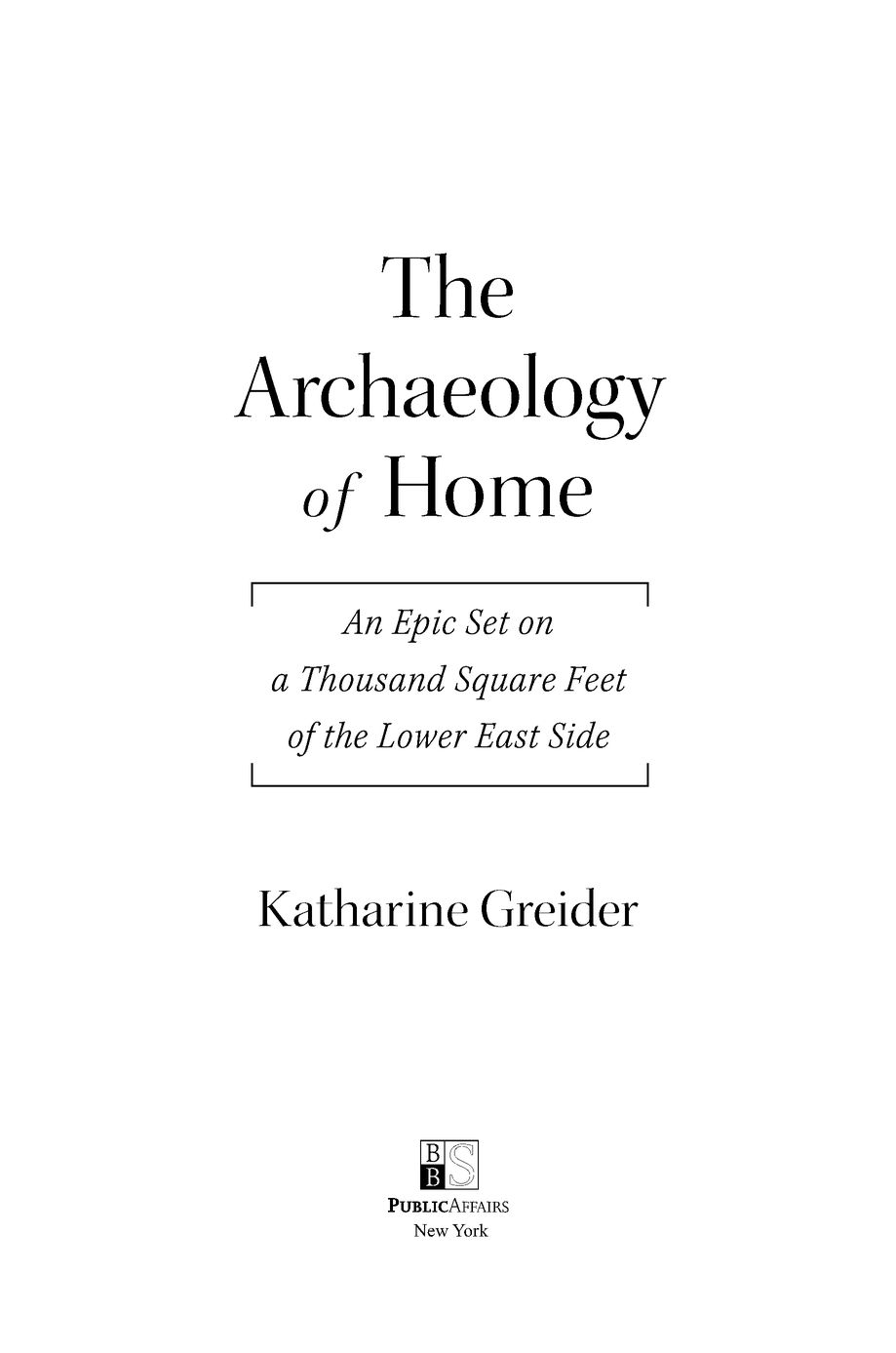
| NUMBERED KEY | JOURNEY THROUGH THE EAST SIDE THE APPROXIMATE LOCATIONS OF FAMILY HOMES |
 | AUTHORS FAMILY |
| 1. | The authors first home in New York, No. 258 E. 7th Street, was occupied in the 1850s by an Irish-born cartman and his family. |
| 2. | No. 239 E. 7th Street, the authors one-time home and the center of our story. |
| 3. | The author and her familys current home. |
 | BARNARD FAMILY |
| 4. | The Barnards home on Broome Street (1840s), before moving to No. 239 E. 7th Street. |
 | WEINSTEIN FAMILY |
| 5. | The Weinsteins home, shortly after immigrating, on Attorney Street (mid-1840s); also a synagogue. |
| 6. | The Weinsteins second location, on Houston Street. |
| 7. | The Weinsteins third location, on Avenue C, just before moving to No. 239 E. 7th Street in 1860. |
| 8. | Abraham Weinstein, widowed and remarried, moved from No. 239 E. 7th Street to No. 243 (late 1860s). |
 | PHILLIPS FAMILY |
| 9. | The Phillipss location on Delancey Street (1850s). Levy Phillipss glazier shop was listed in business directories at No. 255 Delancey Street. |
| 10. | Levy and Clara Phillipss s home on Columbia Street when granddaugher Clara Hart was born (1865); several years later they moved to No. 239 E. 7th Street. |
| 11. | Rachel and Joseph Harts home (1865); Rachel, the eldest child of Levy and Clara Phillips, gave birth to daughter Clara Hart here. |
| 12. | Isabella Salomons home (1910); Isabella, the youngest child of Levy and Clara Phillips, moved here after the death of her mother and after the sale of the property at No. 239 E. 7th Street. |
 | WIEDER FAMILY |
| 13. | The Wieders location, on Cannon Street (1891-1892), around the time of their son Michaels birth. |
| 14. | The Wieders location, on Columbia Street (1893-1894), around the time of their son Morriss birth. |
| 15. | The Wieders location, on Lewis Street (1897), the same year Simon Wieder, the Wieder family patriarch, petitioned for US. citizenship. |
| 16. | The Wieders location, on 6th Street, around 1900. |
| 17. | Simon Wieders trimmings shop, on Avenue C, before and after the family moved to No. 239 E. 7th Street (around 1907) |
JOURNEY THOUGH THE EAST SIDE
THE APPROXIMATE LOCATION OF FAMILY HOMES
AVALONTRAVEL
PROLOGUE
The Phone Call
THIS MORNING, I have brought out the box. After dropping the kids at school and David at the bus stop, I hauled it from the back of the hall closet and tore off the packing tape, releasing an odor of dust and mildew.
Its nothing but a box of battered files bearing such dry labels as Engineers Reports, Contractors, Working Loan App., Court Docs, and the somewhat more evocative Garys Noise Complaint. I lift out the folders. My throat constricts.
These are the records of what David and I came to call our real estate debacle. For months, I daily thumbed through the files with an anxiety of the sort the body remembers all too well. How fresh these documents have kept the thing, so that now, years later, they tune me up like a music box, setting off the familiar suite of physical responsesthe agitating gut, the sweating palms.
The call came late one evening in January 2002. David was out of town. I had the children in bed with me, and reached over their small, sleeping bodies to answer the phone. It was Ralph, the architect wed hired to recommend a schedule of repairs for the dilapidated row house we called home. He and his colleagues, a contractor and an engineer, had convened that afternoon to study digital photos taken in the dank crawl space beneath our basement floor. The situation, he told me, was more serious than we had supposed. Indeed, the foundation of the building in which my children and I were even now settling down for another nights rest was in what professionals call a failed condition, its crushed and rotted wooden beams propped up by crumbling brick piles and two-by-fours (these last suggesting an inadequate repair of relatively recent vintage). Ralph said he would wait until Monday morning before reporting this hazard to the City of New York, at which time city officials would almost certainly seal the building. And he left no doubt as to what we should do over the weekend: Get the hell out.
This was the squealing-tires moment, time of slow motion, anesthetized, alert, poppies swaying silently in the breeze. I called David. I ran downstairs to tell the owner of the basement apartment. I buzzed the parlor-floor door until someone answered, and broke the news to its tenants, recent college grads. I told the young couple to whom, only months before, David and I had rented the second floor. She answered the door in her bathrobe. Her mother had recently died of cancer. Yes, I insisted, Im told its not safe. Theres no time. Im sorry. I went hurriedly back upstairs, lay down next to my children, and, for the first of what would be many, many times, taunted myself with an image that seemed almost as preposterous as death itself: our building kneeling and falling into the street. Also unreeling in my head was a scenario in which I did the prudent thing, woke the children, hustled them to safety, our breaths misting the night air. I didnt move. That night I slept.
It had been nearly a decade since wed first settled on this block near the eastern edge of lower Manhattan, 7th Street between Avenues C and D. The last five of these years wed spent on the top floor of a small, south-facing row house, No. 239, about midway between Tompkins Square Park, always sounding with bongos and barking dogs, and the silently moving waters of the East River. During the mid-1980s this four-unit building had been turned into a financially dodgy and socially fractious co-op; as the owners of the top two floors, we were majority shareholders. It was here we brought our newborns home from the hospital in 1997 and 2000. It was here that the one pink towel David and I had quite happily shared for years turned into an entire set. The place literally held together the family wed made. The precise elevation of its stairs and angle of its light secretly inscribed themselves on our bodies and gave us comfort in familiarity. The house or, to be precise, our shares in the co-op, were our principal investment, dollars laid up like so many bushels of grain. We were at home there. It was the setting of our imagined future.


